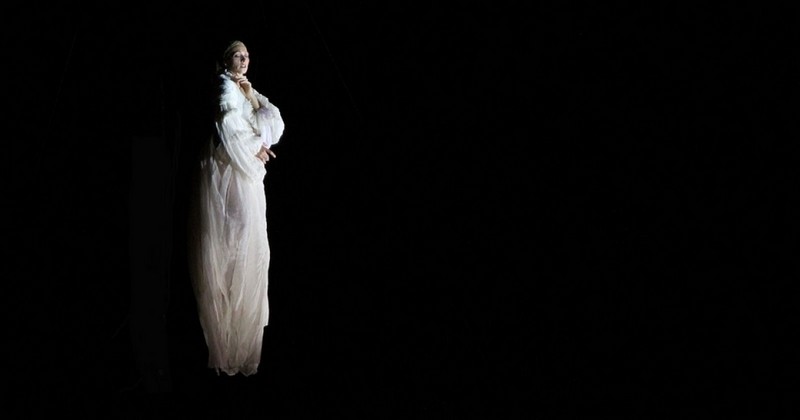Spectrophobia: pathological fear of ghosts

The extreme terror of spirits, as a phobia, can damage people's quality of life.
In most cases, our fears and fears are normal and ordinary elements that are present in the mental life of people. that are present in the mental life of any healthy person. However, in some cases certain phobias can appear, which are pathological and totally irrational fears that damage our quality of life.
Sometimes these phobias are based on objective and easy to recognize elements: for example, in the case of dog phobia, the source of terror and stress is almost always easy to identify in what surrounds us. But... But what happens when the source of extreme terror is something that does not even exist? This is the case of spectrophobia, or extreme fear of ghosts..
What is spectrophobia?
Spectrophobia is defined as a mental disorder that appears when someone experiences an extreme and persistent terror to ghosts and specters in general... or, rather, to what he interprets to be a manifestation of a ghostly entity. in general... or, rather, to what he/she interprets to be a manifestation of a ghostly entity.
Normally, the fear of ghosts is so extreme that the focus of attention of people with spectrophobia shifts very easily to any stimulus in the environment that can be interpreted as a revelation that ghosts are nearby.
This presence of delusional ideas functions as a fear feedback system: anxiety and tension leads to a state of alertness in which one is very sensitive to everything that happens nearby, and the possibility of coming into contact with spirits is so terrifying that all psychological processes become that all psychological processes are oriented towards the avoidance of such situations.
What are people with spectrophobia like?
People with spectrophobia remain in a constant state of tension when they are in a space they believe to be haunted by supernatural entities such as ghosts. This means that they avoid being alone in dark, enclosed places or places that have been associated with the supernatural through urban legends.
The proximity of one of these places coinciding with a context in which there are few or no companions causes spectrophobics to enter into a state of extreme anxiety that in some cases leads to panic attacks or mental blocks.
Of course, a certain fear of ghosts is still relatively common even in many adults who do not believe in supernatural entities in principle, but in the case of spectrophobia this terror is powerful enough to damage the mind. is powerful enough to damage the person's quality of life..
Moreover, this fear will not appear only when watching, listening or hearing, for example, immersive fiction works that work with the idea of spirits and ghosts; it will extend to all areas of life and its symptoms may appear at any time, without the person being able to control this.
This last point is relative, since people with spectrophobia tend to want to inform themselves about topics related to parapsychology and the supernatural, and in some way learn how to deal with them.They somehow learn to read their own life as if it were the script of a horror movie in order to be as prepared as possible for the possible arrival of ghosts.
The contagion of fear of spirits
As in most phobias, suggestion also plays a very important role, and both what they say and what they hear is very important.What others say or do can intensify this extreme fear.
This is relatively common, as the fear of the person with spectrophobia often rubs off on others (albeit to a lesser extent), and this in turn reinforces the delusional idea that ghosts are nearby. Moreover, while the fear experienced by people who see how the person with spectrophobia reacts is fleeting and only appears in those kinds of specific situations, the terror of the latter is persistent, the latter's terror is persistent and does not depend on the presence of others to reveal its symptoms. to reveal its symptoms.
The symptoms
The symptoms of spectrophobia are physiological, cognitive and behavioral.
1. Physiological symptoms
The entry in the state of alertness that produces this phobia is triggered by the mediation between the limbic system of the brain and the hormone glands that are distributed throughout the body. In a matter of seconds, the person with spectrophobia notices how his or her pulse and respiration rate their pulse and breathing rate accelerate sharply and sweating begins..
In addition, at this stage the sympathetic nervous system causes the finer, superficial Blood vessels to constrict to prevent possible blood loss, which causes the skin to take on a pale tone. The muscles tighten so that they can act quickly in case escape becomes necessary. In general, all the signs of anxiety appear.
2. Cognitive symptoms
On the cognitive side, spectrophobic attacks are characterized by inducing a state in which mental wandering ceases and the attention is totally fixed on the elements. attention is totally fixed on external elements, constantly moving.constantly moving. The person enters a state of maximum alertness to try to find out where the danger could come from.
3. Behavioral symptoms
The most evident behavioral symptom of people with spectrophobia is the constant avoidance of places considered dangerous because of the risk associated with being a place where ghosts appear. In case of being in one of these places, they will do everything possible to get out of there, even if this has a high cost for their public image or for their personal or professional projects in the medium and long term.
(Updated at Apr 13 / 2024)